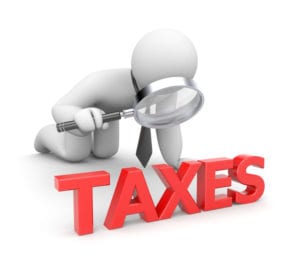Busting Taxation Myths
 With a new tax year now underway, and in an effort to assist Australian taxpayers and businesses over the course of the next 12 months, the ATO (Australian Taxation Office) has investigated a variety of tax myths and common misconceptions that can sometimes lead to claims being submitted incorrectly.
With a new tax year now underway, and in an effort to assist Australian taxpayers and businesses over the course of the next 12 months, the ATO (Australian Taxation Office) has investigated a variety of tax myths and common misconceptions that can sometimes lead to claims being submitted incorrectly.
According to Kath Anderson, the ATO’s Assistant Commissioner, unorthodox and often untrustworthy advice on tax is leaving many people unsure of what’s right and what’s wrong.
There are many misconceptions as far as a tax return is concerned, with one of the most common being that any worker is allowed to receive a reduction for certain costs including laundry, up to 5,000 km in travel expenses for vehicles, and $300 for work-related expenses.
Although in some instances you might not need to retain a receipt for the above example, it doesn’t mean that these expenses are tax deductible or that everyone is entitled. There are three specifications that need to be met in order for the aforementioned entitlement to be valid and they include:
- A clear demonstration of how a tax deducted claim was reached
- The claim must relate to the individual’s income earnings
- The taxpayer must have spent the money themselves
Another misconception is that a credit card bill or statement can be used as proof for a claim and this isn’t always correct. As these types of statements don’t always provide detailed information, it can be very hard for the ATO to ascertain exactly how the money was spent, or what the cash went toward. As a result, these forms of documentation won’t always be suitable should a claim be called into question.
A few examples of non-tax deductible claims
There are even instances whereby individuals feel entitled to claim for activities such as a gym and leisure memberships, or certain types of cosmetic products that contain UV protection. Although certain people can claim for these types of expenses; they will need to meet a particular range of criteria.
Furthermore, the Australian Taxation Office is also growing increasingly aware of individuals that work from home attempting to claim the cost of their Netflix or other online streaming service subscriptions; under the pretense that it relates in part to their income.
Other claims that can be called into question are those where a person may believe that they can reduce their tax by submitting travel from their residence to a workplace, or when they wear their own clothing and makeup to their employment.
For anyone hoping to enjoy a holiday abroad or locally this year that is tax deductible – a brief conference during your trip won’t allow you to claim for the entire visit. It’s also worth noting that an accountant or bookkeeper isn’t responsible for any unexpected issues that may arise as a result of these types of failed claims either.
It is down to the individual submitting their tax return (whether they do so on their own, or with the aid of an agent), to ensure that all claims are correct.
The Top 10 Taxation Misconceptions and Myths
Common misconception – Everyone is entitled to claim 5000 kilometres in vehicle-related expenses, $300 for employment-related costs and up to $150 for laundry and apparel; even if the cash wasn’t spent on the above.
Reality – Although exemptions can be made as far as keeping records for the above costs are concerned; this doesn’t translate to an automatic entitlement. These claims should not be considered a standard deduction for any taxpayer. For anyone hoping to submit this type of claim, they will need to be able to demonstrate that the above costs were spent on the aforementioned activities, as well as provide evidence of how the claim was calculated.
Common misconception – A credit card statement can act as all the proof needed for a claim
Reality – Anyone that wants to claim for a deduction to their tax will need to demonstrate what they purchased, where the item (or items) were purchased from, who supplied the goods and when the transaction took place. A standard credit card statement won’t typically provide this range of data. If record-keeping exceptions apply for any reason however, then these details aren’t always required.
Common misconception – Outside workers can claim for makeup that includes sun protection
Reality – In the majority of instances, cosmetic products are considered a private expense and so items that simply feature UV protection won’t be permitted for this type of claim. On the other side of the coin, if an individual is required to work outdoors and the product purchased has been specifically developed for sun protection, then it may be tax deductible (such as creams with a high SPF rating).
Common misconception – Needing to stay in shape for a job means a gym membership is tax deductible
Reality – Only those that are required to maintain very high levels of fitness (of which regular tests typically take place) can be permitted to claim a gym membership as a work-related expense. For example, certain types of authoritative roles permit this type of claim; such as working for the Australian Defence Force.
Common misconception – A single conference or meeting can make an entire holiday tax deductible
Reality – Anyone hoping to add a conference as an expense for a claim will need to demonstrate the duration of the event. A claim can include travel expenses and time-related activities, as long as they are to do with the conference – but anything before and after it will not fall into the category of claim-worthy.
Common misconception – Claiming for work clothes due to an employer’s request for a certain colour or style to be worn
Reality – In order to claim for clothing, the apparel will either need to be a uniform associated with the brand in question, or be protective/ specific to an occupation such as overalls for protection, or safety gear. Items that consist of plain colours including black and white are non-deductible under any circumstance.
Common misconception – A Netflix or online streaming subscription can be claimed for due to work requirements
Reality – Only the work-related partition of streaming usage can be claimed for and will need to be categorised by the claimant. Furthermore, a connection will need to be demonstrated between using the service and any income earned by the taxpayer.
Common misconception – Travelling from home into work can be claimed for, as without commuting, an income wouldn’t be possible
Reality – For the majority of people, their employment will begin from the moment they enter their office, or visit their workplace. As a result, an employer won’t typically be paying the individual for getting to work, so this type of claim might not be possible; unless the person is transporting heavy or spacious equipment to their workplace.
Common misconception – Personal and commercial phone calls can be claimed for, due to a capped phone plan
Reality – Anyone that uses their phone (be it home or mobile) for work and personal purposes will need to demonstrate how much of their bill goes toward which activity. Only the work-related calls can be claimed for and evidence will typically need to be provided for a successful claim.
Common misconception – An agent, bookkeeper, accountant, or other third party representing the taxpayer will be responsible for all aspects of a claim
Reality – the only person ultimately responsible for ensuring that all information of a tax return is correct, is the taxpayer themselves. This accuracy of submission extends to deductions and responsibility can’t be passed on to a representative should any information be called into question.
Source – https://www.ato.gov.au/Media-centre/Media-releases/Tax-myths-busted!/



